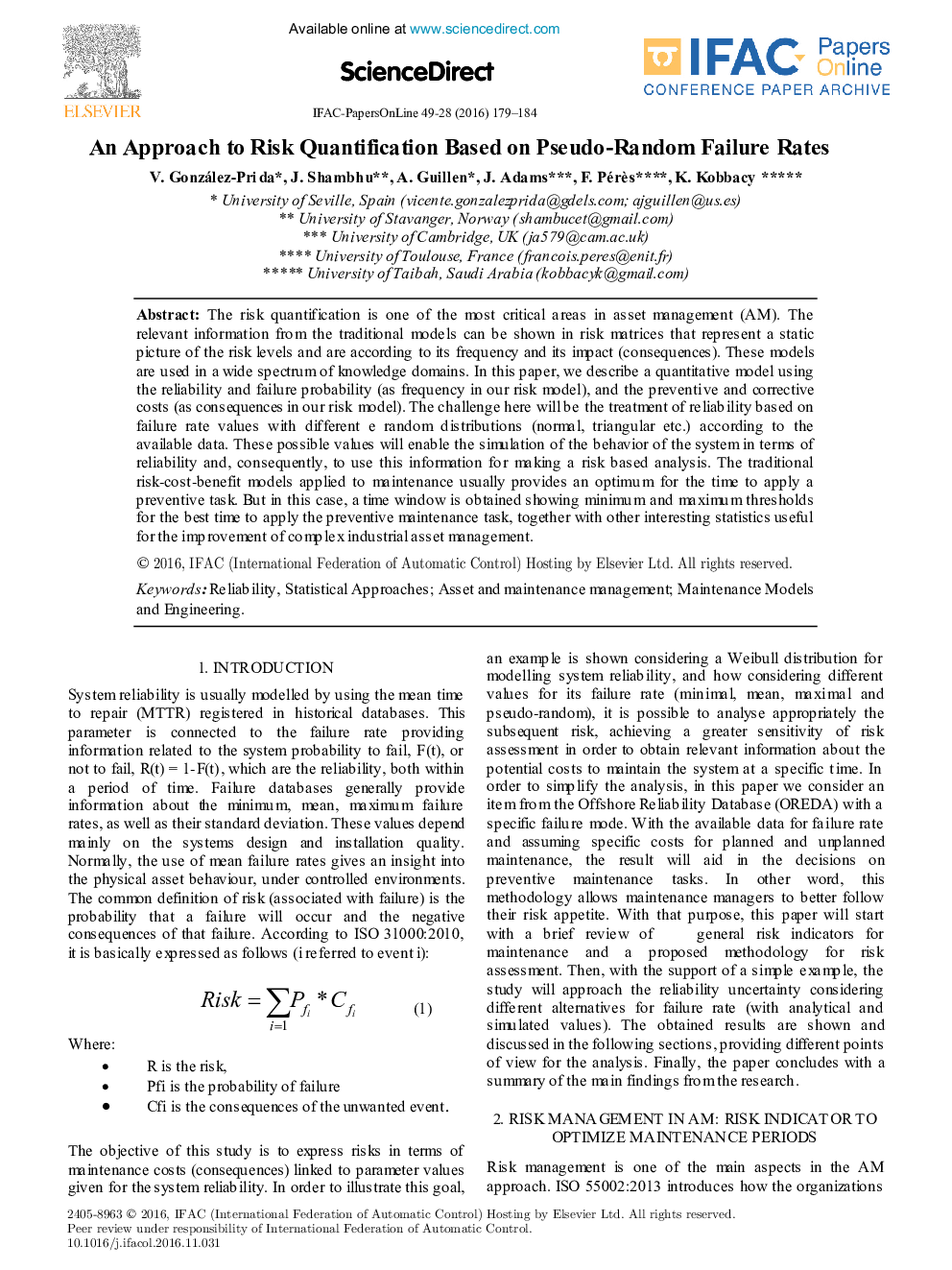| Article ID | Journal | Published Year | Pages | File Type |
|---|---|---|---|---|
| 5002686 | IFAC-PapersOnLine | 2016 | 6 Pages |
Abstract
The risk quantification is one of the most critical areas in asset management (AM). The relevant information from the traditional models can be shown in risk matrices that represent a static picture of the risk levels and are according to its frequency and its impact (consequences). These models are used in a wide spectrum of knowledge domains. In this paper, we describe a quantitative model using the reliability and failure probability (as frequency in our risk model), and the preventive and corrective costs (as consequences in our risk model). The challenge here will be the treatment of reliability based on failure rate values with different e random distributions (normal, triangular etc.) according to the available data. These possible values will enable the simulation of the behavior of the system in terms of reliability and, consequently, to use this information for making a risk based analysis. The traditional risk-cost-benefit models applied to maintenance usually provides an optimum for the time to apply a preventive task. But in this case, a time window is obtained showing minimum and maximum thresholds for the best time to apply the preventive maintenance task, together with other interesting statistics useful for the improvement of complex industrial asset management.
Related Topics
Physical Sciences and Engineering
Engineering
Computational Mechanics
Authors
V. González-Prida, J. Shambhu, A. Guillen, J. Adams, F. Pérès, K. Kobbacy,
